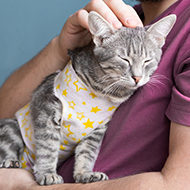500 bird species threatened by extinction, survey finds
The bare-necked umbrellabird could become extinct in the next century.
A new study from the University of Reading has suggested that more than 500 bird species could become extinct within the next 100 years.
Researchers say that climate change and habitat loss will cause these extinctions, reaching numbers three times higher than all bird extinctions recorded since the year 1500.
Among the birds which are considered ‘vulnerable’ to extinction are the bare-necked umbrellabird, the helmeted hornbill and the yellow-bellied sunbird-asity. Researchers believe that the loss of these birds would significantly reduce the variety of bird shapes and sizes worldwide.
It is believed that, even with protection from habitat loss, hunting and climate change, approximately 250 bird species could still die out.
The researchers gathered information from the IUCN Red List to examine the status of nearly 10,000 bird species. Using the data, they assessed the extinction risk based on the threats each species faced.
Large-bodied birds were discovered to be particularly vulnerable to hunting and climate change, whereas birds with broad wings suffered more from habitat loss.
The study suggests that preventing habitat destruction could be the most effective way of saving bird species. However, reducing hunting and stopping accidental deaths could save the birds with more unusual features, which are important to ecosystem health.
Manuela Gonzalez-Suarez, senior author of the study at the University of Reading, said: “Stopping threats is not enough, as many as 250-350 species will require complementary conservation measures, such as breeding programmes and habitat restoration, if they are to survive the next century.
“Prioritising conservation programmes for just 100 of the most unusual threatened birds could save 68% of the variety in bird shapes and sizes. This approach could help to keep ecosystems healthy.”
The full study can be found here.
Image © Shutterstock



 RCVS Knowledge has called on vet practices to audit their post-operative neutering outcomes.
RCVS Knowledge has called on vet practices to audit their post-operative neutering outcomes.